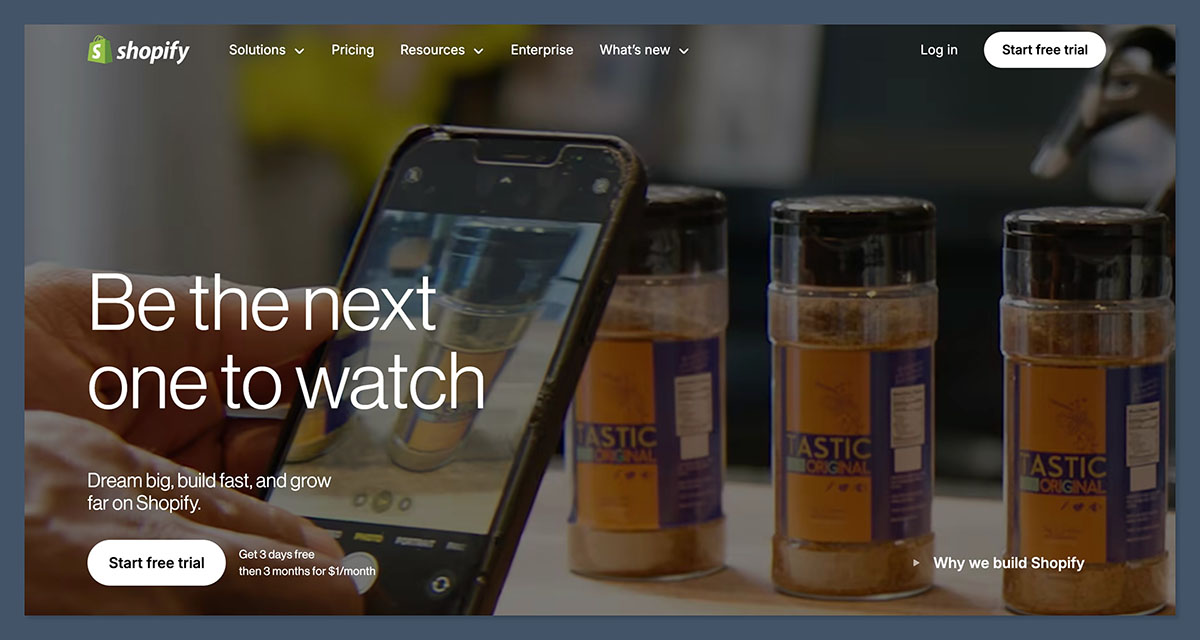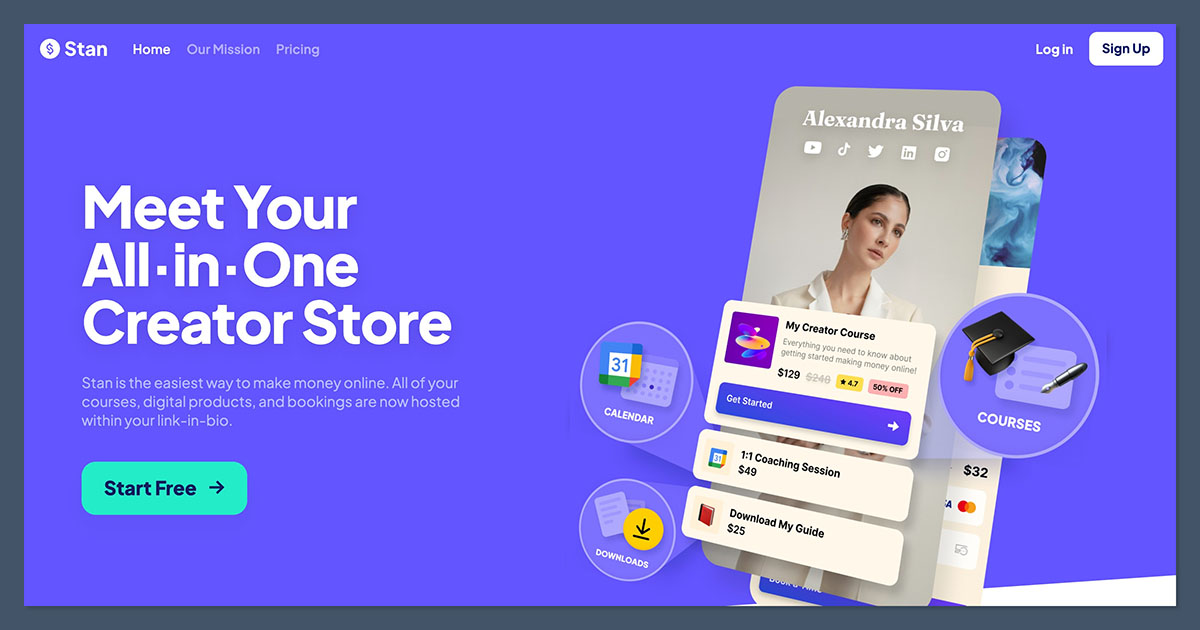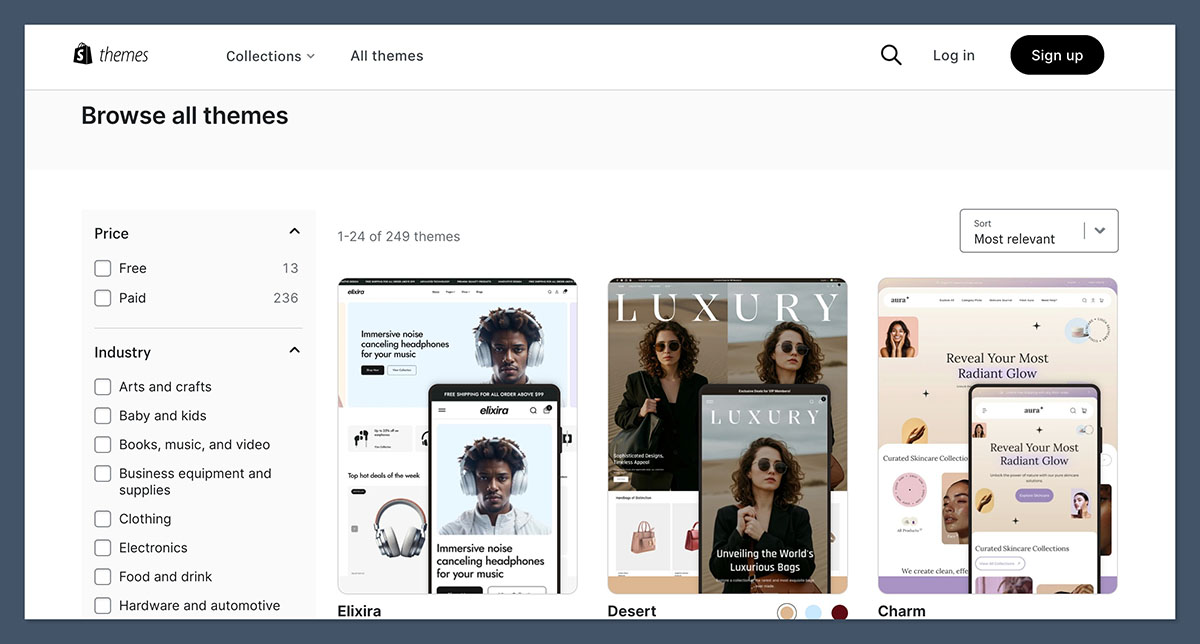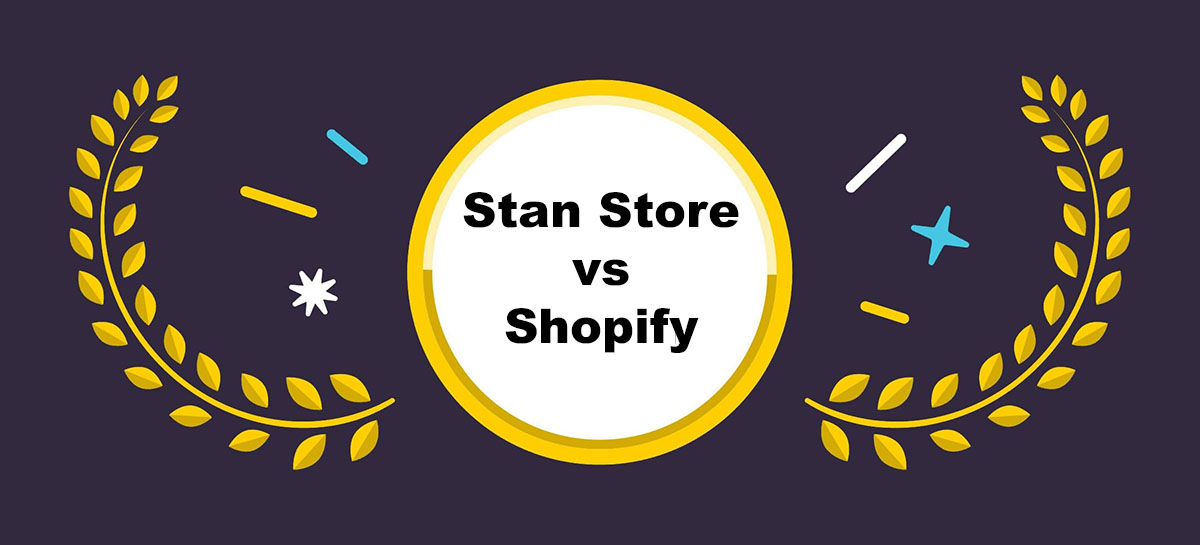Stan Store and Shopify are two popular platforms used by creators and online sellers — but they serve very different needs.
After thoroughly researching and testing both platforms for ecommerce and print-on-demand, I can say this:
Shopify is the clear winner for anyone building a serious online store.
But Stan Store still has its place — especially if you’re a digital creator selling simple products.
In this review, I’ll compare Stan Store and Shopify across features, pricing, ease of use, print-on-demand tools, and more, so you can choose the right fit for your business.
Last updated: July 2025
Stan Store vs Shopify: Quick Verdict
Shopify – Best for ecommerce and print-on-demand
Professional storefront, full print-on-demand integrations, and scalable features.
Stan Store – Best for digital creators and influencers
Simple setup, easy digital product sales, but no support for physical products.
If you want to build a brand and sell print-on-demand products — Shopify is hands-down the better platform.
Quick Comparison Table: Stan Store vs Shopify
| Feature | Stan Store | Shopify |
|---|---|---|
| Best For | Digital creators | Ecommerce & POD |
| Print-on-Demand Support | Not supported | Fully integrated |
| Product Variants | None | Yes |
| Inventory Management | None | Yes |
| Digital Products | Native | Yes |
| Payment Options | Stripe | 100+ gateways |
| Templates | Very limited | 100+ premium themes |
| App Ecosystem | Closed | 8,000+ apps |
| Free Trial | 14 days | 3 days + $1 for 3 months |
| Price Range | $29–$99/month | $39–$399/month |
Best for Print-on-Demand: Shopify

If you’re running a print-on-demand business, Shopify wins easily.
Stan Store doesn’t support POD at all — no integrations, no shipping, and no product catalog features.
Shopify, on the other hand, is built to support complex inventory and fulfillment needs. You can connect with top POD suppliers like:
- Printful
- Printify
- Gelato
- SPOD
Here’s how easy it is to launch a POD store on Shopify:
- Sign up for Shopify (3-day free trial, then $1/month for 3 months)
- Install Printful or Printify from the app store
- Add your designs
- Sync the products to your store
- Start selling
The supplier handles printing, packing, and shipping. You keep the profits. This setup is perfect for t-shirts, mugs, wall art, phone cases, or any custom merch.
Stan Store doesn’t have any of this. You could technically list a POD product and manually email orders to a supplier, but that’s not scalable.
Winner: Shopify
Fully supports print-on-demand and physical product sales. Stan Store doesn’t.
Best for Digital Products: Stan Store

Stan Store was built for digital creators. You can upload files and start selling in minutes. Supported digital product types include:
- Ebooks
- Notion templates
- Coaching sessions
- Calendars
- Courses
- Affiliate offers
Everything is hosted within one storefront. Stan acts like a smart checkout link with lead capture, upsells, and email opt-ins built-in.
Stan Store’s top features for creators:
- One-page checkout
- Calendar booking integrations
- Affiliate marketing links
- Email list opt-ins
- Stripe payments
- Course hosting (on Pro plan)
It’s ideal if you’re building an audience on platforms like TikTok, Instagram, or YouTube and just want a frictionless way to sell.
Stan Store also shines when it comes to speed-to-launch. There’s no need for custom themes, plugins, or domain names.
You don’t even need a website. You just create your page, add your offers, and link it in your bio. That simplicity is what makes it so effective for creators who don’t want to get bogged down in tech or design decisions.
Winner: Stan Store
If you’re a content creator focused on digital offers, Stan Store is the quicker and simpler option.
Pricing Breakdown: Stan Store vs Shopify
Stan Store Pricing (Simple & Predictable)
| Plan | Monthly Price | Best For |
|---|---|---|
| Creator | $29/month | Selling digital products |
| Creator Pro | $99/month | Courses, affiliates, email capture |
You get access to the full platform with either plan, but Pro adds email marketing and affiliate tools. No hidden fees, no plugins, no upsells.
Another benefit of Stan Store’s pricing is predictability. You won’t get hit with extra charges for using apps, third-party integrations, or transaction-based features.
Everything is bundled into your plan, which makes budgeting a lot easier — especially for creators just starting out.
That said, Stan Store doesn’t give you any flexibility in terms of plan customization.
There’s no a la carte system or app store to mix and match your features. You either pay for Creator or Pro — and if you need one Pro feature, you’re forced to upgrade the whole plan.
Shopify Pricing (Flexible but Add-Ons Add Up)
| Plan | Monthly Price | Key Features |
|---|---|---|
| Basic | $39/month | 2 staff accounts, basic reports |
| Grow | $105/month | 5 accounts, better reports |
| Advanced | $399/month | Advanced analytics, 15 accounts |
There’s also a $1/month for 3 months promo after your free trial, which is great for testing.
But keep in mind:
- Most themes cost $180–$350 (one-time)
- Some apps cost $5–$50/month
- Shopify charges 2.9% + $0.30 per transaction (unless you use Shopify Payments)
Shopify’s pricing structure is more scalable — but also more complicated.
You can start cheap, but as your business grows, your costs will rise with app subscriptions, higher-tier plans, and processing fees. If you’re not careful, it’s easy to go from $39/month to $150+.
The flip side is flexibility. With Shopify, you’re paying for power. You can create exactly the ecommerce setup you want using apps, customizations, and third-party services.
That trade-off between cost and control is what makes Shopify a better long-term investment for serious sellers.
Winner: It depends
Stan Store is cheaper and simpler. Shopify offers more value if you’re serious about ecommerce and can justify the extra costs.
Sales Tools and Features
Stan Store doesn’t have sales tools in the traditional ecommerce sense. It’s more of a one-page funnel with an upsell system.
You can’t:
- Run discounts
- Offer bundles or variants
- Track inventory
- Recover abandoned carts
Shopify gives you all of this and more.
Shopify’s best ecommerce sales features:
- Abandoned cart recovery
- Discounts and coupons
- Product variants (size, color, etc.)
- Upsell and cross-sell apps
- Multi-currency selling
- Advanced analytics and reports
If you’re trying to grow sales and scale, Shopify has the tools.
Shopify also supports automation features through tools like Shopify Flow and third-party apps like Klaviyo or ReConvert.
You can create automated sequences based on customer behavior — like offering a discount to someone who abandoned their cart, or sending a thank-you email after a purchase.
Stan Store, on the other hand, offers a much simpler funnel. You might have one product page with an upsell, and that’s it.
It’s clean and fast, but there’s no way to optimize or test different sales tactics without building everything manually.
Winner: Shopify
Shopify is built to sell and scale. Stan Store isn’t designed for product-based sales.
Ease of Use
Stan Store: Fast and Simple
- Set up takes less than 10 minutes
- Drag-and-drop layout
- No plugins or apps needed
- Easy to connect Stripe
- One-page product sales
It’s simple, but also limited. You don’t get much control over design or structure.
What makes Stan Store appealing is how little you have to think about. You don’t need to install anything or configure complicated settings.
It’s perfect for people who are allergic to tech. If you can use Canva or Google Docs, you can use Stan Store.
But simplicity comes at a cost. If you want to make even small adjustments — like adding a testimonials section, tracking inventory, or building a custom checkout — you’ll hit a wall pretty quickly.
That’s where Shopify has the edge.
Shopify: A Bit More to Learn, But Worth It
- Step-by-step onboarding
- Helpful dashboard and setup checklist
- 100+ free and paid themes
- Section-based editor (not full drag-and-drop)
- Steeper learning curve, especially for beginners
Once you understand Shopify, it’s powerful. But expect to spend a few hours getting used to it.
Shopify’s interface is designed to support complexity — but that means there’s more to learn.
Fortunately, there are plenty of tutorials and documentation to help. If you’re the kind of person who’s comfortable exploring and tweaking settings, you’ll grow into the platform quickly.
Over time, you’ll appreciate how customizable Shopify becomes. You can adjust SEO, optimize checkout, tweak product templates, and automate marketing flows — all from within the dashboard or through apps.
Winner: Stan Store for beginners, Shopify for long-term growth
If you want fast results, Stan Store wins. If you’re willing to invest time to learn, Shopify pays off.
Templates and Store Design
Stan Store
- No themes or customization tools
- Basic storefront design
- Focused on utility, not branding
You can change colors and add your logo, but don’t expect anything fancy.
Stan Store uses a minimalist, mobile-first layout. It looks clean and is optimized for link-in-bio traffic, which is great if you’re primarily promoting on social platforms.
But if you’re hoping to build a strong brand identity, you’re out of luck. There’s very little room to express your brand visually.
You won’t find options like homepage sliders, blog layouts, testimonials, or advanced navigation. It’s more of a checkout page than a real storefront.
That might work for some creators — but not for ecommerce businesses.
Shopify

- 13 free themes, 180+ paid ($100–$400)
- Modern, professional layouts
- Templates for apparel, electronics, home decor, art, and more
- Mobile-optimized and customizable
Themes support:
- Homepage sliders
- Product filters
- Collections
- Blogs
- Reviews
Shopify gives you control over your brand — Stan doesn’t.
You can customize fonts, color schemes, button styles, and layouts. If you know some basic HTML/CSS or hire a developer, the flexibility is virtually endless.
Shopify also makes it easy to switch themes without losing your content, so you can redesign as your business evolves.
Winner: Shopify
Far more design flexibility and better suited to building a real brand.
Payment Options
Stan Store uses Stripe only. It’s simple and fast, but limited.
Shopify supports 100+ payment gateways, including:
- Shopify Payments
- PayPal
- Apple Pay
- Google Pay
- Klarna
- Afterpay
With Shopify Payments, your transaction fee is:
- 2.9% + $0.30 (Basic)
- 2.6% + $0.30 (Shopify)
- 2.4% + $0.30 (Advanced)
You can also accept local currencies, offer subscriptions, or build custom checkout flows.
Stripe on Stan Store is enough for creators selling one-time digital products. But it doesn’t support more advanced payment workflows like subscriptions, recurring billing, or installment payments.
You’re limited to Stripe’s default checkout, with little customization.
Shopify also allows you to control the customer payment experience.
You can offer different payment options by country, upsell warranties, or even create custom payment gateways using third-party tools or APIs.
Winner: Shopify
More options, lower fees (with Shopify Payments), and global payment support.
Apps and Integrations
This is where the gap widens.
Stan Store is a closed platform. You get what you get — no plugins, no integrations, no automation.
Shopify has:
- Over 8,000 apps in its App Store
- SEO, upsells, reviews, email marketing, subscriptions, and more
- Print-on-demand tools like Printful, Printify, Gelato, and SPOD
If you want a system that grows with you, Shopify gives you the flexibility.
With Stan Store, you’re limited to what the platform offers natively. If you want to use a CRM, send automated emails, or connect analytics tools, you’ll need to use external workarounds.
And that defeats the purpose of using an all-in-one tool.
Shopify’s ecosystem, by contrast, is built to scale. Need a subscription box feature? There’s an app. Want to A/B test pricing? There’s an app for that too.
The app store becomes your ecommerce Swiss Army knife.
Winner: Shopify
Apps make Shopify 10x more powerful than Stan Store.
SEO and Marketing
Stan Store has no SEO tools. There are no blogs, metadata, or URL controls. You’ll need to rely entirely on your social audience or paid traffic.
Shopify, on the other hand, is great for SEO.
- SEO-friendly URLs
- Custom title tags and meta descriptions
- Blogging tools
- Built-in redirects
- Ecommerce Booster app (from Semrush)
- Schema markup apps available
You can also:
- Sync products with TikTok, Instagram, Amazon, Etsy
- Run email campaigns with Shopify Email
- Set up Facebook pixel and Google Analytics
Stan Store assumes your traffic will come from your existing followers. There’s no blog or sitemap, which makes it hard for your storefront to show up on Google.
If you stop posting on social, you lose all momentum.
Shopify gives you long-term discoverability. Your product pages, blog posts, and collections can rank on search engines.
This creates a compounding traffic engine that can bring you leads for years without constant content or ads.
Winner: Shopify
Better SEO, more channels, and better long-term traffic potential.
Support
Both platforms offer decent support, but Shopify is more comprehensive.
Stan Store Support
- Email support
- Creator Facebook group
- Help center and FAQ
Shopify Support
- 24/7 live chat support
- Help docs, video tutorials
- Shopify Community
- Dedicated support for Shopify Plus
- Social support via Twitter, Facebook, and more
Stan Store’s community is small but engaged. Their support team is helpful for basic issues, but they don’t offer live chat or real-time assistance.
That can be a problem if something breaks on launch day or during a promo.
Shopify offers round-the-clock support, even on weekends and holidays. Whether it’s billing, shipping, or a third-party app issue, there’s usually someone who can help.
And because Shopify has millions of users, you’ll find answers to almost any problem on YouTube, Reddit, or their official forums.
Winner: Shopify
Better support coverage and more resources for scaling stores.
Absolutely — here’s your updated Final Verdict section with two extra paragraphs added, while keeping the rest unchanged, in the same tone and structure, with no emojis.
Final Verdict: Shopify Wins for Ecommerce and POD
| Category | Winner |
|---|---|
| Print-on-Demand | Shopify |
| Digital Products | Stan Store |
| Store Design | Shopify |
| Payment Options | Shopify |
| SEO & Marketing | Shopify |
| Ease of Use | Tie (Stan Store is easier, Shopify is more powerful) |
| Pricing | Tie |
| Apps & Integrations | Shopify |
If you’re building a print-on-demand or physical product business, go with Shopify. It’s the ecommerce platform that can grow with you, and it has everything you need to succeed long-term.
If you’re just looking to sell a few PDFs or templates from your TikTok bio, Stan Store might be all you need.
But for ecommerce sellers — Shopify wins by a landslide.
Stan Store is great for creators who don’t want to mess with tech, shipping, or product fulfillment. It’s quick, clean, and minimal.
You can monetize an audience with digital offers without building a full online store. For that use case, it’s near perfect.
Shopify, on the other hand, is a true ecommerce engine.
It’s built for sellers who want control over every part of their online business — product catalog, fulfillment, branding, marketing, analytics, and more. Whether you’re a solo entrepreneur or building a full brand, Shopify gives you the tools to scale.






